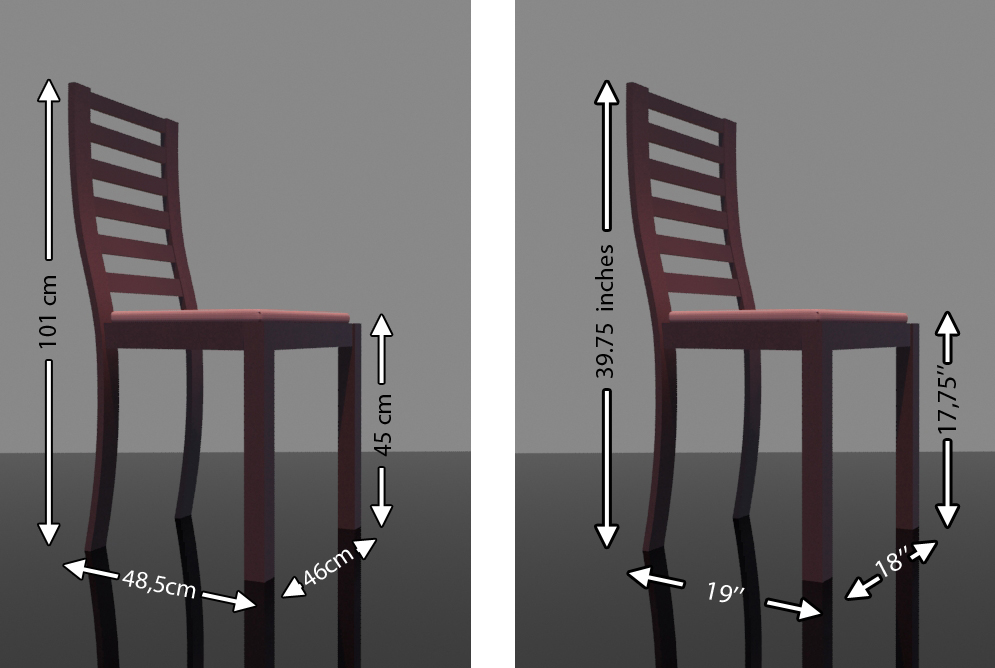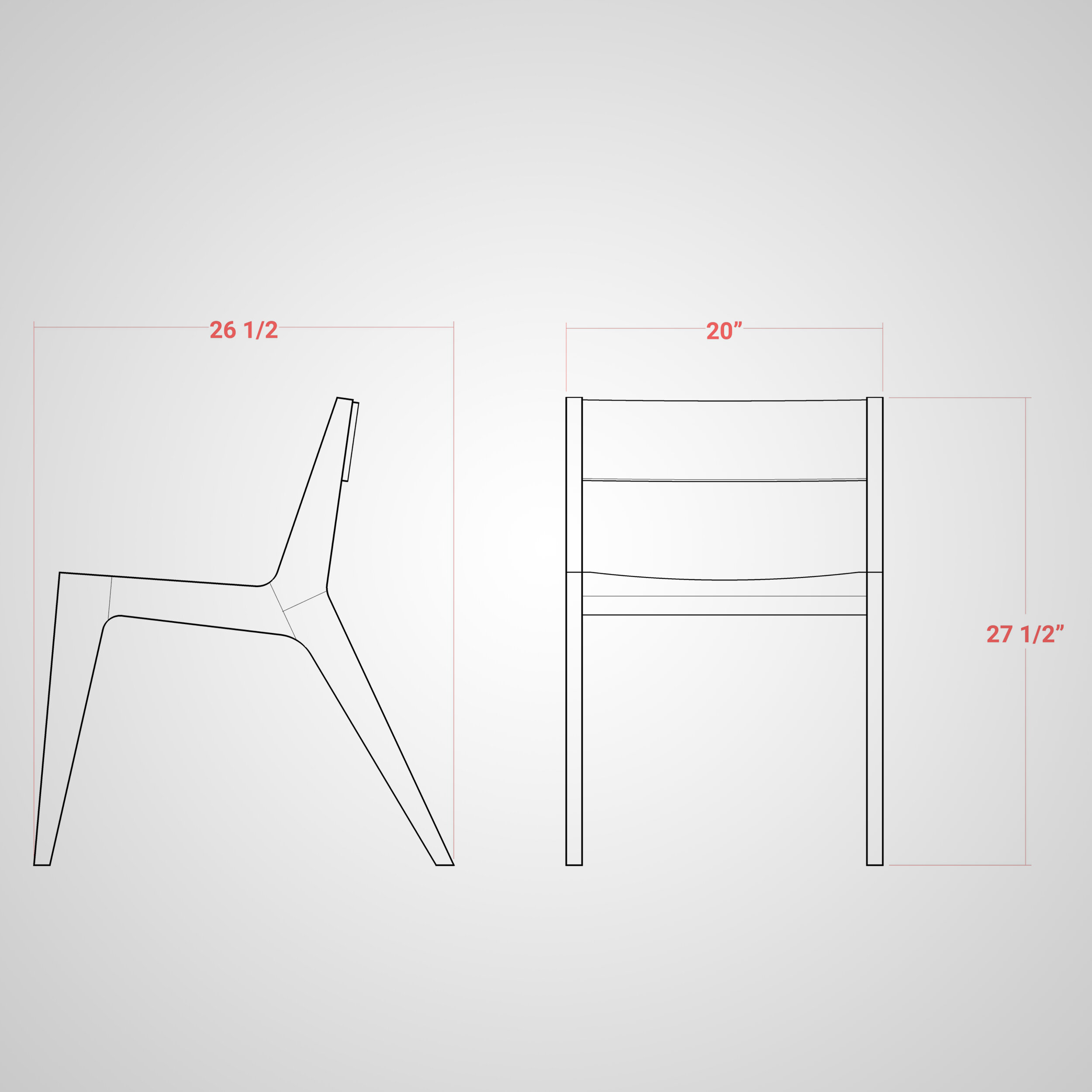Standard Dining Chair Sizes

Dining chairs are essential furniture pieces that add comfort and style to any dining space. Understanding the standard sizes of dining chairs is crucial for ensuring a comfortable and functional dining experience. This section provides a comprehensive overview of typical dining chair dimensions, considering different styles and their suitability for various table sizes.
Dining Chair Dimensions
The standard dimensions of dining chairs vary depending on the style and intended use. However, there are some common measurements that provide a general guideline.
| Dimension | Standard Range (cm) |
|---|---|
| Seat Height | 45-50 |
| Seat Depth | 40-45 |
| Seat Width | 45-50 |
| Back Height | 90-100 |
These measurements represent a comfortable and standard range for most dining chairs. However, it’s essential to consider the specific dimensions of your dining table and personal preferences when selecting dining chairs.
Dining Chair Styles and Size Variations
Dining chairs come in various styles, each with its unique size characteristics.
- Armless Dining Chairs: Armless dining chairs are generally more compact than chairs with arms, offering a more streamlined and space-saving option. They typically have a narrower seat width and a slightly lower back height.
- Dining Chairs with Arms: Chairs with arms provide additional support and comfort, particularly for individuals who spend extended periods at the dining table. They generally have a wider seat width and a higher back height compared to armless chairs.
- Upholstered Dining Chairs: Upholstered dining chairs offer a plush and comfortable seating experience. The thickness of the upholstery can influence the overall dimensions of the chair, with thicker padding increasing the seat height and depth.
Dining Chair Size and Table Compatibility
The size of dining chairs should be carefully considered in relation to the size of the dining table.
- Small Dining Tables: For small dining tables, compact chairs with a narrower seat width and a lower back height are ideal. This ensures sufficient legroom and prevents the chairs from feeling bulky or overwhelming in a limited space.
- Medium-Sized Dining Tables: Medium-sized dining tables can accommodate a wider range of chair styles, including chairs with arms and upholstered chairs. The key is to ensure that the chairs are not too large or too small in proportion to the table.
- Large Dining Tables: Large dining tables often require chairs with a wider seat width and a higher back height to provide ample support and comfort for larger gatherings. The chairs should be proportionate to the table, creating a balanced and harmonious dining experience.
Factors Affecting Dining Chair Size Selection

Choosing the right dining chair size is crucial for a comfortable and functional dining experience. Factors such as table height, personal comfort, and the layout of your dining room all play a role in determining the ideal chair size for your needs.
Table Height
The height of your dining table is a primary factor in selecting the right dining chair size. A comfortable dining experience involves a chair height that allows you to sit comfortably at the table with your feet flat on the floor.
- Standard Table Heights: Standard dining table heights typically range from 28 to 30 inches.
- Chair Height Adjustment: Some dining chairs offer adjustable heights, allowing you to customize the chair to your table and personal preferences.
- Table Height and Chair Height Relationship: A good rule of thumb is to choose a chair that is approximately 2 to 3 inches lower than your table height. This allows for comfortable legroom and a natural posture while dining.
Personal Comfort
Beyond table height, personal comfort is another crucial factor in dining chair size selection. Consider the following factors:
- Seat Depth: A comfortable seat depth allows you to sit back comfortably without feeling cramped or constricted.
- Seat Width: A seat width that provides adequate space for your hips and thighs ensures comfort and prevents feeling squeezed.
- Backrest Height: The backrest height should provide adequate support for your back and promote good posture while dining.
- Armrests: While not essential, armrests can enhance comfort by providing additional support for your arms and elbows.
Dining Room Layout
The layout of your dining room also plays a role in selecting the right dining chair size.
- Space Constraints: Consider the available space around your dining table. Oversized chairs can make the dining area feel cramped, while smaller chairs may leave too much empty space.
- Traffic Flow: Ensure that the chosen chair size allows for comfortable movement around the dining table and through the dining area.
- Dining Room Style: The overall style of your dining room can influence the chair size you choose. For example, a formal dining room may call for larger, more elegant chairs, while a casual dining area might benefit from smaller, more comfortable chairs.
Aesthetic and Functionality, Dining chair size cm
Selecting the right dining chair size is not just about comfort and functionality, but also about creating a cohesive and aesthetically pleasing dining space.
- Chair Style: The style of your dining chairs should complement the style of your dining table and the overall design of your dining room.
- Chair Material: The material of your dining chairs should be durable and easy to clean.
- Chair Color: The color of your dining chairs should complement the color scheme of your dining room and the overall design of your dining area.
Considerations for Ergonomics and Comfort: Dining Chair Size Cm

Dining chairs are not just about aesthetics; they play a crucial role in your dining experience, impacting your comfort and posture during meals. Selecting chairs that prioritize ergonomics and comfort is essential for ensuring a pleasant and enjoyable dining experience.
Ergonomic Features to Consider
When choosing dining chairs, it’s crucial to consider ergonomic features that contribute to good posture and comfort. These features promote proper spinal alignment, reduce strain on your back and neck, and enhance your overall dining experience.
- Seat Depth: The ideal seat depth allows for proper legroom and support. The seat should be deep enough to support your thighs while leaving a small gap (2-3 inches) between the edge of the seat and the back of your knees. This gap prevents pressure on the back of your knees, promoting blood circulation.
- Backrest Support: The backrest should provide adequate lumbar support, which refers to the curve in your lower back. This support helps maintain the natural curvature of your spine, reducing strain on your back muscles. Look for chairs with contoured backrests or adjustable lumbar support.
- Armrest Positioning: Armrests should be positioned at a height that allows your elbows to rest comfortably at a 90-degree angle. This positioning helps to reduce shoulder and neck strain. Consider chairs with adjustable armrests to accommodate different heights and preferences.
- Seat Height: The seat height should allow your feet to rest comfortably flat on the floor. This ensures proper posture and prevents strain on your legs and feet. If you have a high table, consider chairs with adjustable seat heights.
- Material: The material of the dining chair can significantly affect comfort. Upholstered chairs offer greater cushioning and support compared to wooden or metal chairs. However, the type of upholstery material can influence comfort. For instance, leather chairs can be prone to sweating in warm climates, while fabric chairs might be more prone to staining.
Comparing Comfort Levels of Different Materials
Different materials used in dining chairs offer varying levels of comfort. This table provides a comparison of the comfort levels of wood, metal, and upholstery:
| Material | Comfort Level | Pros | Cons |
|---|---|---|---|
| Wood | Moderate | Durable, natural, versatile | Can be hard and uncomfortable without cushioning |
| Metal | Moderate to low | Lightweight, sturdy, easy to clean | Can be cold and uncomfortable without padding |
| Upholstery | High | Soft, cushioned, comfortable | May require more maintenance, prone to staining or wear |
Dining chair size cm – Figuring out the right dining chair size in cm can be tricky, especially when you want to make sure your chairs fit perfectly with your table. Once you’ve got the measurements sorted, you can start thinking about adding some personality with covers.
Check out jysk dining chair covers for some seriously stylish options that can also protect your chairs from spills and wear and tear. No matter what size your dining chairs are, you can always find a cover that will make them look awesome and keep them in tip-top shape.
Figuring out the right dining chair size in cm is super important for a comfortable and stylish dining room. You want to make sure your chairs fit well at the table and allow for enough legroom, but also look good.
If you’re worried about spills or wear and tear on your chairs, consider dining room chair protective plastic covers to keep them looking new. They can come in different styles and colors, so you can find a look that matches your dining room.
Once you’ve got the size and protection figured out, you’re ready to enjoy those delicious meals!
